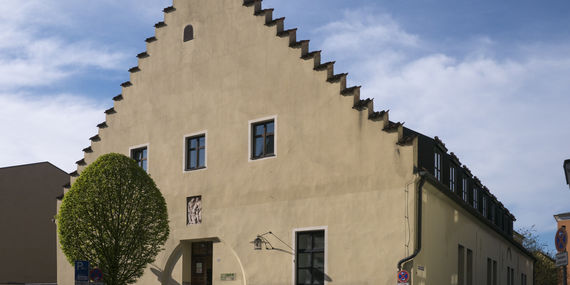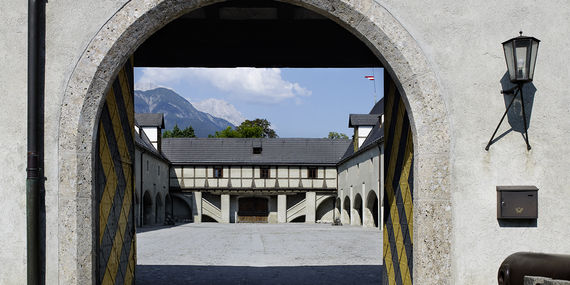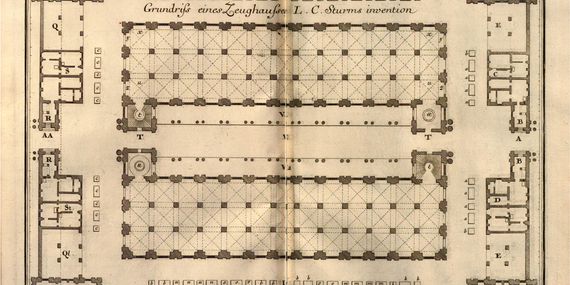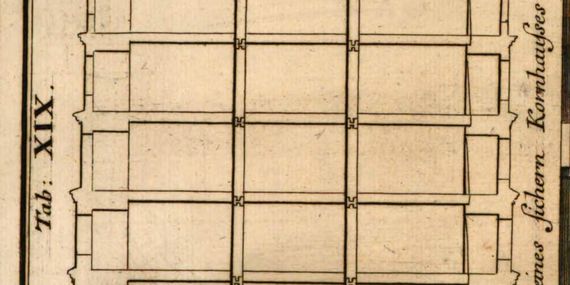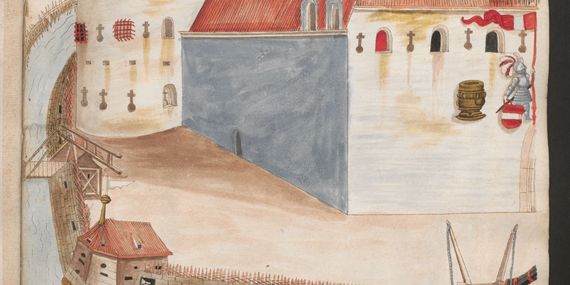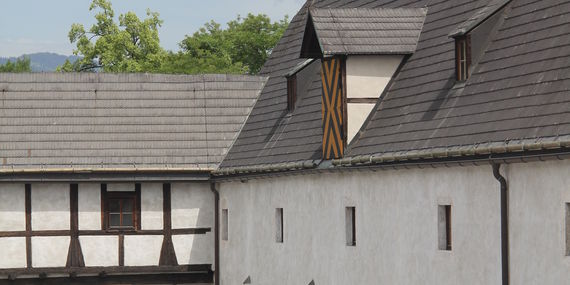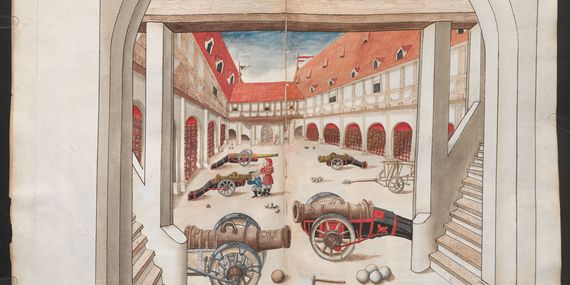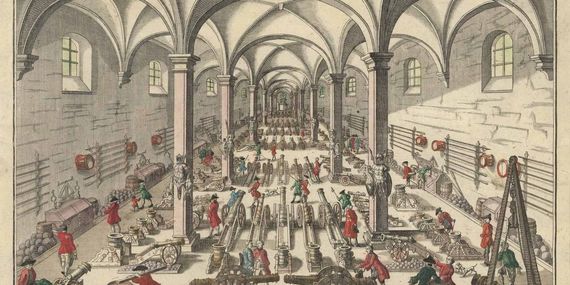Geschütz-Einzelteil, 2. H. 17. Jh. (Oberhausmuseum Passau).
Copyright: Oberhausmuseum Passau
Military Storages
In the 15th century, the warfare changed in two essential points: the use of gunpowder increased and knights on horseback no longer formed armies, but mercenaries on foot. Firearms and associated tools as well as ammunition and gunpowder had to be stored. The numerous weapons of the foot troops now fighting in large units also needed more space. This had an impact on the construction of those storage buildings in which military equipment was stored - at that time the building type of the arsenal was developed.
The building structure of arsenals is determined by storage economics: There are large, clear halls with lots of space and one or more central passages with large portals dimensioned for horse carriages. At the municipal armoury in Passau, the former large portal is still visible clearly as the front entrance.
The invention of firearms necessitated a suitable storage place, especially for large cannons. For this reason, the mostly vaulted artillery halls as the storages for cannons remained on the ground. Cannons, mortars, bullets, powder barrels etc. could be stored. The open halls provided overview and space, the vault fire protection. Because of the heavy load of the cannons, there were usually no cellars. In the upper floors provided space for smaller weapons and ammunition. The same structure of armouries can still be seen in 18th century depictions.
A variant of the central main hall with long passage on the ground floor is shown by the imperial armoury of Maximilian I in Innsbruck. In the two parallel long wings, the large guns were housed in ground floor niches in a way that they could be easily manoeuvred into the courtyard.
